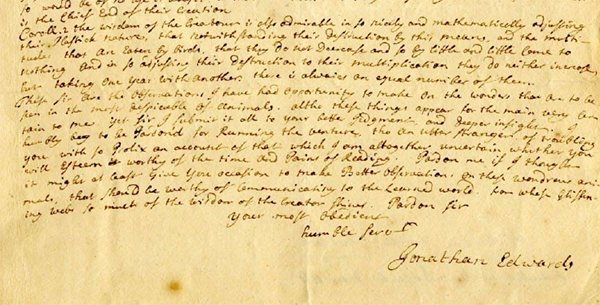Class News
David Libby ’64 reminisces about the JE printing press
May 13, 2022
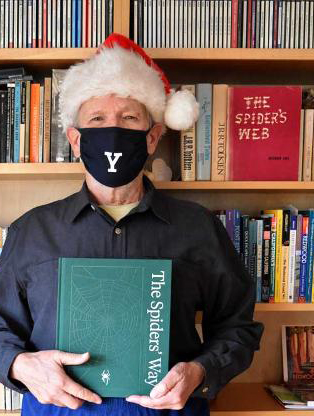
It all started when Ron Sipherd sent a photo of himself holding a new historical introduction to Jonathan Edwards College, titled The Spiders’ Way, published in collaboration with the JE Trust. Groundwork for this effort has been laid over the years, but no such publication has been produced since 1978. This new version, published in 2020, includes ninety reminiscences from alumni, fellows, and staff about their experiences at JE.
In sending the photo, Ron referred to work done by classmate Dave Libby who was the JE printer during our undergraduate years. What follows is correspondence from Dave:
It certainly is surprising how often the JE Press has come up lately, given that it’s been well over a half-century since I was active there!
I was the JE Printer starting in our sophomore year. It was a bursary job; I’d spent my freshman year bussing tables in the Calhoun dining hall, but when I found I could work in the print shop after being assigned to JE, I jumped at the chance. I had learned letterpress printing in junior-high shop class, and liked it. I soon found that the then-chief printer at JE didn’t know what he was doing, so I basically told him to leave it to me, which he happily did.
When Beekman Cannon, the Master of JE, found he had a competent printer available, he gave me lots of interesting jobs, and we added a small offset press to the shop and moved everything to a bigger new workspace. By senior year, I was taking a graphic-design course across the street in the Rudolph building and had access to the equipment over there, so could make film negatives for the offset press, which made it possible to add artwork to many event programs, etc. Also The Spider’s Web, the JE literary magazine which I designed and printed, as well as being editor.
I also printed and bound three of my own books during our undergraduate years. I had enough of a portfolio to get into the Art School, and received the MFA in Graphic Design in 1966. Beekman Cannon made me a Junior Fellow of JE so I’d keep printing for him, and also wouldn’t starve since I could eat lunch in JE. I also taught some of the later printers, including Lance Hidy (’65 or ’66 I think). Besides printing in JE, I worked at the Yale Press part time both years, doing production and design.
There were several other college presses in those days, but we didn’t have a whole lot of contact. The Honorable Company of College Printers was revived at least long enough to hold one Wayzgoose that I recall. (Look it up!) I don’t know how many are still in operation, but I made a donation to the JE Trust in 2020, in memory of Beekman Cannon, and the trustees agreed to use part of it to maintain and support the JE Press. I had only been back there once since 1966, when a group of members of the Society of Printers of Boston visited Yale, probably in the 90s. The printers at that time didn’t seem to need anything, so when I got rid of my own collection of old letterpresses and type, I donated it to the Museum of Printing up in Haverhill.
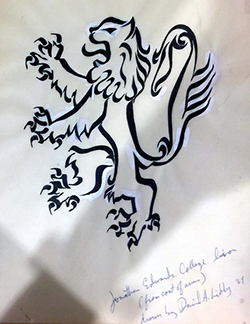
Although I am a book designer first and foremost, I had nothing to do with the JE book, which is very nicely done. I do remember hearing from a young woman who was working on it back in 2017, and told her a little bit about the press, but at that time my lady friend was in her final illness, passing away that summer, so I dropped the ball with JE.
A few months ago, another young lady from JE contacted me about a piece of artwork I had done while JE printer. It was a calligraphic drawing of the heraldic lion rampant from the JE crest. I think I did it for the cover of a program for some JE college event. Now she wanted to put it on a sweatshirt! I said of course, and recently received a free sweatshirt, which you can see online; I’ll have to find the link and send it to you.
Hi David,
Happy New Year! My name's Lydia (JE '21). I'm writing to you now on behalf of the JE Trust in regard to a JE Crest you designed some time during your tenure as a 1960s JE student.
If you've seen any of our recent emails, the Trust has been releasing limited edition vintage JE sweatshirts inspired by past alumni designs. The first iteration was reminiscent of the 1970s and was inspired by photos from Jonathan Edwards alumni, Gary Collett (JE ’78) and Courtney Carroll (JE ’79). The second iteration was a holiday collection that I designed, inspired by the JE first year tradition of spelling out JE LUX with holiday lights on Old Campus. You can see these past sweatshirt designs on our website here.
As we move to design our next iteration, we ran across your drawing of the JE Lion. With your permission, we'd love to use this design as the inspiration for our next sweatshirt. If you agree, we would send you a complimentary sweater and be sure to credit your work on the JE Trust website and any time we share it with alumni.
I await your response and any additional details you can provide on such a neat drawing.
All the best
Lydia
Oddly, this same drawing (which I had signed) was brought out when the Society of Printers had visited years ago, because the printer recognized my name and made the connection. That that bit of artwork done with a steel pen way back in the last century should now be for sale on a shirt online is just mind-boggling!
Hi Lydia — What a surprise to have this surface again! Probably twenty or more years ago, when the Society of Printers of Boston made a “pilgrimage” to Yale to visit presses and libraries (and of course have lunch at Mory’s), one of the then-college printers showed me this drawing when we visited the JE Press, where both I and fellow member Lance Hidy (JE ’66 I think, and also a printer), who came with us, started. It was probably done for one of Beekman Cannon’s programs, and to have it appear again after more than half a century is flabbergasting. It’s not dated and I can’t recall exactly when it was done, or for what. I was printer from 1962-64, then “printer emeritus” as we jokingly called it until I got my MFA in graphics from the School of Art in 1966; during those last two years, I did a lot of special projects for Mr. Cannon, long-time Master of JE.
Of course, you may use it for the sweatshirt — and since I’ll be 80 this year, and unlikely to be around the next time it comes up, I hereby assign all rights in the drawing to the JE Trust (if something more legal is needed on paper, let me know). Having spent most of my career in textbook design, I doubt that anything else of mine has ever been reproduced on a sweatshirt, and I’d be delighted to have one (XL)!
Although I made a donation to the JE Trust and received a copy of the very nicely done book, I was unaware of the other things you’ve been doing, and haven't received any recent emails. If you could make sure I’m on the mailing list, I’d appreciate it. If any questions, or anything further needed, feel free to phone if easier.
Have a healthy and happy 2022. — Dave Libby ’64
Hi David,
Thanks for your thoughtful email and giving us permission to use the image! It's so great to hear the backstory of the image and it's down-and-up-again lifespan. I'll record the details you provided with the final sweatshirt version so future JE-ers can read about the legacy of the press and the spiders who worked on it.
For my part, I unfortunately never worked on the press, but I walked past it every day to my dorm, and I've learned much more about it as an alumni with the JE Trust. I'm not sure if you know Miko McGinty JE '93, but she's a graphic designer who began her career on the JE Press, created The Spiders' Way (along with a slew of other beautiful books), and has been a wonderful mentor in all things including my budding interest in graphic design.
All this is to say that I'm so happy to learn more about the Press's history and that the legacy of this design will continue. I'll be sure to order you a sweatshirt and send it to your address. I'll also double check that you're on our mailing list for any future correspondences.
Thank you for giving permission for us to use the design!
We launched the sweatshirt store this week (you can find it here), and I just placed an order for your gratis sweatshirt!
For classmates who want to go deeper, here is the connection between Jonathan Edwards and spiders.
Jonathan Edwards and the Flying Spiders
by cataloger Catherine Falzone
September 29, 2015
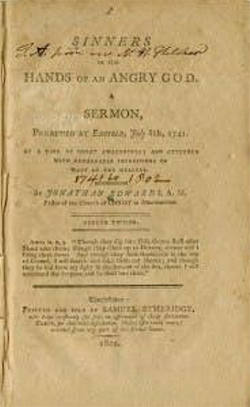
“Sinners in the Hands of an Angry God — A Sermon,” by Jonathan Edwards, 1802 copy
Jonathan Edwards (1703-1758), New England preacher and theologian, is perhaps most famous for the 1741 sermon, “Sinners in the Hands of an Angry God,” and for being a central figure in the religious revival known as the First Great Awakening. If you know him just from that sermon, you may get the idea that he was all fire-and-brimstone, all the time. Edwards was in fact a nuanced thinker with access to the works of Enlightenment writers, which influenced his understanding of the natural world and its relation to theology.
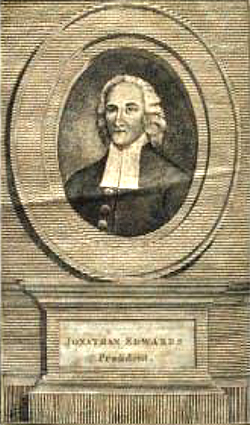
Portrait of Edwards from frontispiece of “The Millennium; or, The Thousand Years of Prosperity”
As a young man, reading texts by Isaac Newton, John Locke, and others, Edwards became aware of the scientific and philosophical shifts going on in Europe. Chief among these was the idea that one could understand the natural world through close observation. For Edwards, the wonders of nature were proof of the genius of the “Creator.” This mindset is evident in his letter on spiders of October 31, 1723, to Paul Dudley, a Massachusetts member of the Royal Society of London.
Jonathan Edwards’ father, Timothy, had previously written a piece on a particularly fertile pumpkin vine for “Philosophical Transactions,” the journal of the Royal Society, and encouraged Jonathan to write something, too. A keen observer of insects since his teens, Jonathan wrote with evident delight about the “flying” spiders common to New England. Here he describes their method of releasing threads from their spinnerets, and includes a helpful illustration: When a spider would go from one tree or branch to another, or would recreate himself by sailing or floating in the air, he first lets himself down a little way from the twig he stands on by a web, as [in] Fig. 1; and then taking hold of it by his forefeet as in Fig. 2, and then separates or loosens the part of the web cd from the part bc by which he hangs; which part of the web cd, being thus loosened, will by the motion of the air be carried out towards e, which will by the sufferance of the spider be drawn [out] of his tail with infinite ease by the moving air, to what length the spider pleases, as [in] Fig. 3.
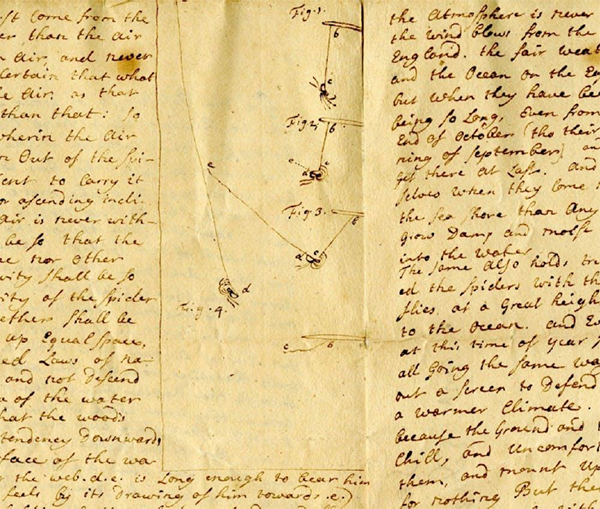
Edwards draws two theological conclusions from observing spiders. First, God not only provides for “all the necessities, but also for the pleasure and recreation of all sorts of creatures, even the insects.” To Edwards, it looked like the spiders were having fun flying from place to place. Second, God manages the amounts of creatures on earth for the greater good: “The wisdom of the Creator is also admirable in so nicely and mathematically adjusting their plastic nature, that notwithstanding their destruction by this means and the multitudes that are eaten by birds, that they do not decrease and so by little and little come to nothing.”
For Edwards, scientific study lent credence to the idea of God as active, intelligent creator of the universe. One need not look further for proof than to the lowly spider.
